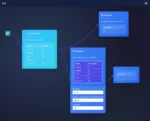
by tyler garrett | May 16, 2025 | Data Processing
Imagine the foundation of your organization’s strategic success as a skyscraper built from carefully assembled blocks of accurate data. Each transaction forms another brick in that structure, and how you handle the synchronization and consistency of these bricks determines whether you build an architecture designed for longevity or one that trembles under heavy workloads. The journey from disparate data systems to a reliable, actionable insight requires smart transactional data loading patterns. Forward-thinking organizations can only achieve consistent, trustworthy analytics and future-proof their business intelligence by refining and effectively managing these patterns. Let’s dive deep into the world of transactional data loading and unveil the methods that boost operational consistency, reliability, and drive business growth through improved analytics capabilities. As consultants experienced in advanced analytics consulting services, we have helped numerous organizations revolutionize their approach to transaction data ingestion and synchronization to establish confidence in their analytics journey. Here we explore those trusted strategies in detail.
Understanding Transactional Data Loading
The essence of transactional data loading lies in efficiently and reliably transferring operational transactional data—from databases, applications, or ERPs—to analytics platforms, data warehouses, or data lakes. This data often contains detailed customer transactions, sales information, inventory movements, and financial accounting records among others. Ensuring accurate transactional synchronization and data integrity is foundational to generate precise analytics outcomes that drive informed business decisions.
Transactional data inherently possesses specific characteristics—it is often event-driven, timestamped, and immutable with clearly defined business semantics. To capture accurate business timelines, analytical systems must mirror operational transactions accurately in near real-time. Leveraging robust loading patterns guarantees consistent analytical representations of operational events, enabling stakeholders to rapidly uncover insights, observe trends in near-real time, and reliably forecast demand.
Mismanagement or inconsistency during data loading causes downstream analytics inaccuracies, leading to faulty predictions or flawed strategic directions. This can severely affect market competitiveness. For instance, inaccuracies in transaction data could cloud an organization’s market trend analysis and demand forecasting insights, resulting in inefficient resource allocation or revenue loss. Therefore, a clear understanding of loading patterns, coupled with a strategic method of implementation, ensures reliable and actionable analytical insights across the enterprise.
Common Transactional Data Loading Patterns
Full Data Reload Pattern
One traditional data loading pattern is the “full data reload.” Organizations might leverage this method for smaller datasets or infrequent loads. Essentially, they extract entire transactional datasets from operational sources and entirely reload them into target analytical systems. While simple, the scale of modern operational data has made this relatively impractical for large-scale scenarios. Frequent full reloads may become costly, time-consuming, and resource-intensive, causing delays and inefficiencies in obtaining real-time insights.
However, despite these limitations, the full data reload pattern still holds value for simplicity and significantly reduced complexity of data reconciliation. It can be particularly useful in cases such as quarterly or annual financial data reconciliation or preliminary historical data onboarding processes. To support initial system setups, organizations sometimes combine full reloads to effectively stage data for detailed historical analysis, setting strong foundations for insightful business analytics such as historical sales analysis for demand planning.
Incremental Data Loading Pattern
Sophisticated, contemporary organizations widely use incremental data loading methodologies due to their lighter resource footprint. Incremental loading captures only the data that has changed or newly arrived data since the previous load. Employing this method prominently decreases runtime, improves data freshness, and reduces the overhead associated with transferring large datasets.
Incremental loading often leverages timestamps or transaction IDs to capture changes accurately. However, incremental approaches require significantly thorough planning and fail-safe mechanisms to ensure synchronization and data integrity remain consistently high. Utilizing technologies like Change Data Capture (CDC) helps extraction reliably occur, thereby minimizing latency and ensuring consistent, accurate analytics. Incremental loading assists organizations in reliably maintaining precise information, facilitating accurate data-driven business growth initiatives.
Transactional Data Integrity: Ensuring Consistency
Transactional data serves as an authoritative reference for numerous business decisions. The priority during any loading process must remain integrity since analytical decisions depend squarely on understanding measurable business events accurately. For example, ensuring precise “sales totals,” including canceled or reversed transactions, protects strategic decision-making related to inventory adjustments or predictive modeling techniques.
Using transactional consistency mechanisms, like database transaction logs and implicitly reliable protocols such as ACID (Atomicity, Consistency, Isolation, Durability), assists in maintaining business-critical data accuracy. Organizations must strongly align transactional loading frameworks to respect integrity constraints at all times. Particularly sensitive analytical domains, like market forecasting or master data management, depend fundamentally on transactional integrity. Techniques such as fuzzy entity resolution for master data management require consistently accurate transaction states as baselines to optimize algorithms applied downstream.
Thorough audits, error-handling, data validation rules, and row-level reconciliation methods may all help maintain integrity and uphold trust in the data ecosystem. Balancing transactional accuracy with loading speed is crucial, demanding robust transaction management solutions backed by solid engineering logic and theoretical rigor.
Managing Schema Evolution in Transactional Data Loading
Enterprise transactional systems rarely remain static; their schemas continually evolve to reflect changing business requirements, integration with new applications, or regulatory compliance needs. Managing schema evolution smartly within transactional data loading patterns guarantees seamless synchronization and consistent analytical views.
A common strategy involves adopting robust schema-handling patterns like schema versioning or metadata-driven processing automation. Such practices enable reliable and smooth updates or backward-compatible schema evolution from source to target systems. Additionally, using advanced schema-handling paradigms—such as polymorphic schema handling in data lake environments—allows flexible data modeling, providing adaptability and future-readiness.
Failing to manage schema evolution thoughtfully creates production outages, improper synchronization, and blocked analytical efforts. Conversely, anticipating schema change patterns and strategically aligning data loading policies helps organizations maintain resourceful analytical governance, improve query performance, minimize data downtime, and sustain accurate analytics reporting structures.
Resolving Data Conflicts and Removing Erroneous Data
Transactions sometimes face complexities like duplicated records, improper transaction sequencing, booking reversals, or contamination with erroneous data. Comprehensive logic must handle these scenarios effectively to uphold analytical accuracy and value. Organizations must quickly address and resolve data issues to protect the integrity of analytical outputs.
Clearly defined conflict resolution logic—such as prioritizing recent updates, flag-based rejection of incorrect data entries, or utilizing targeted deletions using SQL practices (learn more about SQL row deletions techniques from our guide on removing rows of data from a table in SQL)—helps address inconsistencies quickly, ensuring only accurate data supports the analysis.
A proactive and rigorous error management process empowers analytics stakeholders to trust the composite data sets provided. Timely resolution of data errors positions analytics tools as foundational for business agility, backed by a structurally organized transactional data management framework. This confidence positions management to make decisive, strategic actions, prepared with clarified and verified transactional data.
Implementing Transactional Loading Patterns Strategically for Future Growth
Today’s fast-paced business environment demands real-time actionable insights to accelerate growth, improve customer experiences, and enhance operational efficiency. Strategically adopting and implementing transactional data loading patterns sets organizations apart competitively, aligning tactical choices with larger business visions.
Smart organizations meticulously plan and structure their transactional data loading approaches to ensure accuracy, scalability, and flexibility. This best practice creates solid foundations for effective analytics projects and truly data-driven decision-making. Furthermore, it positions organizations to leverage transformative analytics techniques such as data science, artificial intelligence, predictive forecasting, and unified master data management strategies, ultimately achieving stronger competitive advantages.
Ready to optimize your organization’s analytics potential? Partner with experts in transactional data management, analytics strategy, and data engineering to unlock greater efficiency, accuracy, and competitive opportunities. As your trusted strategic partner, we help you implement sophisticated transactional data loading paths that deliver consistent, high-quality analytics outcomes.
Explore our proven expertise in advanced analytics consulting services, designed specifically to propel your business’ data-driven transformation forward reliably.

by tyler garrett | May 15, 2025 | Data Processing
As organizations continue to scale their data analytics capabilities, the complexity and sensitivity of their data often intensify rapidly. Data security has evolved from a best practice into an absolute strategic imperative. Row-level security (RLS) has emerged as a powerful mechanism, empowering organizations to granularly govern data visibility based on user contexts. When implemented skillfully, RLS doesn’t just bolster your data security—it unlocks new avenues for innovation, collaboration, and informed decision-making. In this strategic guide, we’ll discuss how meticulously applying row-level security within your data transformation workflows not only enhances security measures but also ensures seamless, precise, and tailored analytics for every stakeholder within your organization.
Understanding Row-Level Security and Its Strategic Importance
Row-level security refers specifically to controlling access to individual data records or rows present in a database or analytics platform. It grants data administrators granular control, empowering them to dictate exactly who can view particular subsets of data. Instead of managing permissions at a table or database level—which is typically broad and insufficiently flexible—RLS enables finely-tuned access tailored toward user attributes such as departments, roles, geography, or organizational hierarchies.
The strategic benefit of adopting RLS is multifaceted. Importantly, it reduces risk exposure for sensitive data, ensuring only the authorized personnel can interact with critical or confidential information. Beyond security, RLS strategically supports the accuracy and efficacy of analytics initiatives—particularly in complex organizations where personalized visibility brings clearer insights and more immediate, actionable outcomes. For example, a regional sales manager accessing a data dashboard would automatically see only sales data relevant to their geographic scope, eliminating distractions and emphasizing operational relevance.
The power of RLS lies in providing the flexibility for scalable security that adapts dynamically to organizational structures and changing access requirements. Smartly implementing row-level control encapsulates meticulous data governance principles, enabling organizations to stay compliant and competitive as data privacy regulations continue tightening around the globe.
Data Preparation & Role Assessment for Row-Level Security
The successful implementation of row-level security begins with strategic data preparation and rigorous user role assessment. Data practitioners must first audit current data assets objectively, mapping sensitivity levels, hierarchical relationships, and the organization’s legal or compliance-related obligations. Taking such structured preparatory steps will significantly streamline the implementation process while minimizing exposure to regulatory compliance risks.
With your data clearly delineated, a comprehensive role assessment is paramount. Identify user roles, understand each role’s specific requirements, and thoroughly document users’ information access scenarios. Collaborate closely with stakeholder representatives from each team or business segment to ensure no critical detail is overlooked. Leveraging resources such as our PostgreSQL consulting services can provide valuable aid in expertly navigating the RLS implementation process, helping your business avoid potential oversights and pitfalls.
This collaborative effort empowers organizations to implement RLS smartly and accurately at scale, enhancing data-driven decision-making processes. After all, strategic role assignment optimized for row-level security greatly improves user experience by empowering each stakeholder to interact precisely with analytics that reflect their direct operational responsibilities.
A Technical Roadmap for Implementing Row-Level Security in Data Workflows
Transforming your RLS strategy from concept to practical implementation demands a technical roadmap. Initially, decide upon the database or analytics platform most aligned with your organizational goals. Technologies such as PostgreSQL provide precise tools and robust support for row-level security solutions. PostgreSQL, in particular, stands out due to its proven community-supported security features, extensive user base, and flexible integration capabilities.
To begin incorporating row-level security practically, optimize your implementation efforts using comprehensive data workflows. Building a data workflow helps clearly define data transformations, identify filtering logic, and specify conditions under which access to certain data rows is permitted. Businesses can leverage robust data science and analytics environments, like those covered in our guide on how to setup Anaconda3, a data science toolkit, to thoroughly test and validate RLS rules with precision and accuracy.
Establish well-defined, validated conditions and policies at this stage to intelligently streamline your organization’s RLS approach. Documenting all implementation stages clearly ensures easy maintenance and highly efficient troubleshooting in the future, contributing positively to overall system robustness and longevity.
Advanced Implementation Considerations for Complex Data Scenarios
Strategically managing row-level security becomes more challenging with complex and large-scale data scenarios. However, complexity is also an opportunity to demonstrate leadership through innovation. Complex data environments often involve multi-dimensional tables, diverse user hierarchies, or multi-modal datasets—such as those described in our article on multi-modal sensory analytics integrating audio-visual and text data.
When addressing these complex requirements, consider implementing context-aware RLS approaches. Contextual rules can conditionally grant or restrict data access based on various interconnected factors—geography, timing, volume, or dynamic user profiling information, significantly enhancing user experience through intuitive and appropriate information access.
Moreover, technologies like quantum computing promise unprecedented data processing capabilities, potentially amplifying the efficiency and depth of security implementations in the future. Explore opportunities, referenced in our insightful article on unparalleled processing speed unleashing the power of quantum computing, to optimally integrate emerging technologies into your RLS strategy. Keeping abreast of innovation ensures preparedness for sustained competitive advantage and exemplary data stewardship.
Monitoring, Optimization, and Ongoing Management of RLS
Row-level security isn’t a one-off implementation—it requires regular monitoring to ensure continued effectiveness and adaptability. Regular audits to assess RLS policies and continuous feedback from users should define routine operational processes. Monitoring helps pinpoint performance bottlenecks, identify security gaps, and verify compliance with evolving regulatory requirements.
Optimization plays a critical role in maintaining responsiveness and accuracy. Leveraging advanced data analytics techniques—for instance, by upgrading inventory analytics through strategies mentioned in our comprehensive guide on optimizing inventory levels through demand forecasting—can ensure that your RLS implementation constantly aligns with tangible business outcomes, fostering a data-driven organizational culture.
RLS policies inevitably evolve as organizations grow or pivot. Efficient data management processes also involve removing unnecessary data securely and promptly; our insights within removing rows of data from a table in SQL can provide valuable guidance wherever datasets need adjustments. Keeping your data lean, secure, and relevant guarantees faster access times, improved overall database performance, and reduced vulnerabilities or exposures.
The Strategic Advantage of Row-Level Security in Analytics Growth
Implementing row-level security positions your organization to harness data’s full strategic potential safely and responsibly. From isolating confidential information to personalizing analytics initiatives and optimizing operations, RLS functions at the intersection of robust security and innovative analytics growth.
As organizations increasingly utilize cross-platform data integration, services like our guide to sending TikTok data to Google BigQuery using Node.js exemplify how data transformation pipelines demand clear and secure access protocols. Row-level security ensures that the right information reaches the right individuals or automated processes at precisely the right time—maximally secure and minimally intrusive.
In the future landscape of accelerated digital transformation, sophisticated analytics, and increasingly stringent data security guidelines, strategic implementation of row-level security within your data transformation workflows is not just advisable—it quickly becomes an absolute necessity. For organizations maintaining forward momentum, adopting strategically planned RLS frameworks ensures you’re ready not just for today’s challenges but tomorrow’s opportunities as well.
Tags: Row-level Security, Data Security, Data Transformation, PostgreSQL, Data Analytics Strategy, Data Governance

by tyler garrett | May 15, 2025 | Data Processing
In the fast-paced world of data analytics, decision-makers face an ever-growing challenge: extracting actionable insights quickly and efficiently from expanding datasets. As data volumes balloon, traditional query methods can swiftly strain system resources, degrade performance, and inflate both cost and complexity. That’s precisely where the tactical optimization strategy known as projection pushdown comes into play. This powerful optimization is a secret weapon for unlocking efficiency and performance gains by intelligently controlling data retrieval at its most granular level—projecting and selecting only the essential columns and fields needed for a given analysis. With insightful strategies and strategic implementations, projection pushdown not only optimizes query speeds but also significantly reduces data processing overhead. Forward-thinking organizations increasingly embrace advanced optimizations as part of their data architectures, recognizing a clear competitive advantage in managing massive datasets swiftly and effectively. Let’s dive deeper to explore how projection pushdown optimization can systematically revolutionize your data access patterns.
Understanding Projection Pushdown and Why It Matters
Projection pushdown is a query processing optimization technique that filters out unnecessary data at the earliest possible stage of data retrieval. Traditionally, when a data query executes, database engines may pull entire records from storage—even if just a fraction of that information is needed by the end-user. Projection pushdown rectifies this inefficiency, instructing the query engine to read only the necessary columns or attributes from a dataset, ignoring additional fields that have no impact on the resulting analysis or report. This selective approach conserves precious computational resources, reduces input-output overhead, and notably improves query response times.
The significance of projection pushdown spans all domains of professional data analytics—from speeding up daily reporting tasks to powering advanced analyses of ephemeral, high-performance computation workloads. Enhancing efficiency through targeted column selection deeply aligns with contemporary strategies such as those discussed in our exploration of ephemeral computing for burst analytics workloads. By embracing optimizations focused on rapid, selective data retrieval, you can inherently maximize data throughput, minimize latency, and create a smooth, performant analytical ecosystem without the heavy lifting traditionally associated with data processing.
For organizations adopting complex databases such as PostgreSQL, having an optimized database environment can drastically improve system responsiveness and scalability. Professional platforms and databases benefit tremendously from these optimization techniques, and expert advice can streamline this process. Companies seeking deeper PostgreSQL performance insights, custom optimization techniques, or detailed analysis should consider specialized PostgreSQL Consulting Services to rapidly and proficiently leverage projection pushdown capabilities fully.
The Mechanics Behind Projection Pushdown Optimization
Delving deeper into the operation of projection pushdown optimization, it functions by integrating directly alongside database query planners and query execution engines. When a query is dispatched, the optimization process triggers an early data scan stage that assesses the requested columns and fields explicitly. At this point, the optimization significantly reduces I/O and network transfers between the database and the analytic layer by discarding unneeded datasets beforehand rather than later-stage filtering. The difference this makes in real-world scenarios can be substantial, particularly for queries running against expansive warehouse environments or cloud storage systems.
Mechanically, wherever the dataset resides—be it conventional data warehouse columns, Hadoop structures, NoSQL databases, or modern data lakes – projection pushdown identifies and selects required columns early during query processing. By incorporating this targeted extraction into your existing analytics ecosystem, you minimize the yet-to-be-processed datasets significantly—a particularly effective advantage for organizations working with massive, messy datasets requiring specialized ETL processes to clean and transform data.
Besides reducing data size early on, projection pushdown algorithms smartly interact with high-performance Node.js applications that often feed analytics engines. Understanding the mechanics, especially in asynchronous environments, optimizes resource use even further. When you’re building analytics pipelines leveraging Node.js for high-throughput, real-time analysis—such as when you send TikTok data to Google BigQuery using Node.js—projection pushdown can become a crucial component in maintaining smooth performance and reducing latency.
Deployment Considerations and Best Practices
Before diving head-first into deployment, consider practical insights regarding effective implementation. Projection pushdown thrives in structured data environments optimized with clearly defined schema and column-level accessibility. It works exceedingly well with SQL databases, column-oriented data stores, and robust modern data warehousing solutions. Planning data access strategies intentionally, creating carefully sculpted queries incorporating projection pushdown, and aligning technical teams around data structure standardization are vital for success.
An optimized implementation strategy, especially within enterprise environments, typically involves thoughtful architecture and development methodologies, including specialized architecture patterns such as the hexagonal architecture for data platforms using ports and adapters. This pattern neatly aligns business logic with structured, efficient database access strategies like projection pushdown, further clarifying the roles and boundaries within the data processing layer.
Best practices also include ongoing query reviews and metadata examination to ensure unnecessary columns do not populate your analysis—further optimizing query performance and reducing memory consumption. Incorporating automated tools to audit and validate your projection pushdown strategy continuously helps maintain efficiency and provides insightful analytics about data usage patterns, critical for long-term sustainable data management.
Benefits of Strategic Implementation of Projection Pushdown
Effectively embedding projection pushdown optimization in an analytical strategy dramatically enhances operational efficiency and resource utilization. Beneficial impacts cascade across multiple dimensions meaningful to decision-makers—time-to-query improvement, hardware usage reduction, cloud resource cost optimization, and simpler maintenance strategies. Advanced optimization translates directly into measurable business benefits: namely, swift analytics output, quicker data-backed decision-making cycles, reduced cloud expenditure, and streamlined database maintenance.
Moreover, businesses employing sophisticated analytical stacks or edge-computing resources will find projection pushdown especially strategic. When orchestrating computations in modern development environments, mastery of advanced optimizations can significantly enhance overall system efficiency. For example, improved resource allocation and reduction in processing overhead become even more critical for CTOs, data engineers, and analytics directors responsible for managing modern computation stacks featuring single-threaded processes. Insight into execution performance details, as explored in our detailed exploration of Node.js single processor execution and asynchronous superpowers, pairs exceptionally well when leveraging projection pushdown techniques to refine data processing workflows further.
Overcoming Potential Challenges and Roadblocks
Every fruitful technological implementation can face hurdles, and proactively managing these challenges can help ensure seamless adoption of projection pushdown optimization. The primary shortfall seen with projection pushdown implementations involves poor communication or misunderstanding across technical teams about utilizing projection optimization effectively when building queries. Training initiatives and clear guidelines around schema structure, as well as customer-centric communication, ensure that everyone involved—from the engineers to analysts—have a comprehensive understanding of why and how projection pushdown functions best.
Organizations looking to bolster their teams or ensure proficient collaboration while adopting advanced optimizations might additionally benefit from hiring engineers focused on improving data environments. Specialized technical engineers collaborate effectively across departments to ensure implementation effectiveness, drive issue resolution, enhance optimization techniques, and continuously build knowledge assets around projection pushdown practices.
Conquering these roadblocks is feasible through enlightened architecture approaches that clearly elucidate where and how projection pushdown fits best—ultimately freeing your data infrastructure to shine optimally. It positions your analytics environment proactively, preparing it for scalability and efficient data utilization even as workload complexity and data volumes grow.
Conclusion: Elevate Your Data Strategy with Projection Pushdown
With data fast becoming the currency of competitive business success, organizations must adopt strategic, nuanced approaches to ensure efficiency and scalability in analytics operations. Projection pushdown optimization directly contributes to this strategic vision by intelligently streamlining analytics operations and introducing unrivaled performance capabilities. Enhance your analytics maneuverability, economize cloud and infrastructure resource usage, simplify data management procedures, and ensure swift, accurate insights through thoughtfully applied optimizations.
Embracing advanced query-managed strategies like projection pushdown prepares your organization for tomorrow’s data-driven challenges, providing an analytics-driven competitive edge. As you progress down your data strategy journey, let insightful implementation of projection pushdown optimization act as your trusted edge, providing tightly coupled business performance and data strategy alignment structured intelligently and intentionally.
Tags: Projection Pushdown Optimization, Data Access Patterns, Query Performance, PostgreSQL Consulting, Column-based Analytics, Data Strategy

by tyler garrett | May 15, 2025 | Data Processing
In the fast-moving landscape of data analytics and stream processing, precision and accuracy are paramount to maintaining competitive advantages and ensuring high-quality output. Businesses no longer see real-time data insights as optional—they are essential tools for strategic decision-making. Yet inherent uncertainties, missing data, latency, and processing anomalies can degrade the accuracy and utility of streaming analytics results.
Addressing this, stream processing corrections through effective re-windowing strategies have become crucial. Properly designed re-windowing practices empower businesses to realign and correct previously processed data, enhancing the integrity, accuracy, and reliability of insights. As technologists and innovation strategists at Dev3lop understand, leveraging informed re-windowing strategies can transform fragmented data streams into robustly accurate sources of business intelligence and decisively actionable insights for executives and managers.
Understanding Windowing and Re-Windowing: Core Concepts
Windowing in stream processing represents dividing continuous data inflows into manageable segments called “windows,” often determined by a period or number of events. This segmentation supports the real-time aggregation, analysis, and accurate responsiveness tailored to specific business demands. For example, in services such as our transportation analytics initiatives for Austin, appropriately defined window sizes and types are vital in providing valuable, actionable intelligence to city planners and stakeholders.
However, stream data can be inherently noisy, delayed, or arrive out-of-order. Such irregularities can misalign analytics windows, causing flawed aggregations and distorted insights. Re-windowing techniques address these irregularities by allowing system architects and strategists to dynamically redefine or adjust windows, realigning data points in ways that reflect a more accurate temporal or logical coherence.
Refined window alignment ensures critical business metrics such as customer activity, system health indicators, or operational KPIs stay representative of reality. Additionally, re-windowing allows data analysts to retrospectively correct inaccuracies caused by latency, late-arriving data, or inevitable misalignment during initial analysis. When implemented correctly, these strategies empower businesses with more accurate views of operations, facilitating improved strategic decision-making processes and enhanced customer experiences.
When to Deploy Re-Windowing Strategies: Determining the Need
Re-windowing techniques, although powerful, should be strategically deployed where they add maximum value with minimum complexity. Analytics teams should collaborate closely with stakeholders and experts to identify conditions where re-windowing would provide notable return on investment in terms of accuracy, reliability, and actionable insights.
Common scenarios where re-windowing becomes critical include handling frequently arriving late data streams, network or infrastructure latency, sensor failures causing temporary data outages, or significant organizational events triggering irregular data patterns. Take, for instance, an organization attempting accurate predictions in demand forecasting. Linking external factors and demand forecasts together with predictive demand forecasting models is essential; unpredictable external incidents, such as weather disruptions or market shocks, make re-windowing a strategic imperative.
Organizations deploying sophisticated sensor-based solutions or real-time platforms benefit immensely when late or anomalous events can be retroactively aligned to accurate temporal windows, significantly enhancing downstream analytics fidelity. Consultancies such as Dev3lop have observed that proactive deployment of re-windowing strategies in streaming analytics can meaningfully improve operational resilience, performance reliability, and analytical precision. A solid understanding of stakeholder needs set the stage for adopting effective re-windowing practices comprehensively.
Innovative Techniques and Approaches to Effective Re-Windowing
While the technology behind stream analytics has witnessed compelling advancements, truly effective re-windowing strategies still rely largely on creative, well-informed approaches. Technological innovation, such as those delivered through our Node.js consulting services, frequently incorporates precise event-time semantics, watermarking, and speculative materialization techniques to enhance re-windowing capabilities.
Watermarking effectively sets thresholds for how late data is allowed and determines when windows are finalized and closed. Thoughtfully implemented watermarking mechanisms enable recalibration of analytics based on late-arriving events while balancing operational overhead. Meanwhile, speculative materialization involves maintaining preliminary results which can be dynamically adjusted if late data affects analytic accuracy.
Moreover, leveraging cutting-edge cross-modal data alignment techniques allows stream processing systems to integrate complex heterogeneous data sources, alone or in combination, improving precision significantly when data arrives unpredictably. Such innovative approaches help tackle complexity and enhance the robustness of re-windowing implementations.
Partnering with seasoned analytics consultancies allows businesses to tailor sophisticated re-windowing strategies carefully, avoiding unnecessary computational burden and ensuring executive stakeholders receive accurate, reliable, and timely insights. Our experience at Dev3lop highlights that the best re-windowing strategies take balanced advantage of technological advances and careful strategic decision-making reflective of each client’s unique operational landscape.
Improving Quality and Accuracy Through Re-Windowing Practices
Effective re-windowing directly strengthens data quality by allowing organizations to identify, address, and proactively reduce anomalies and errors before they escalate into sizable operational challenges. Stream analytics precision directly affects the reliability of downstream systems—such as visualization dashboards, predictive models, or automated decision-making platforms.
Business leaders increasingly depend on accurate visualizations that clearly communicate important insights. Utilizing re-windowing strategies significantly improves accuracy for critical visual layers by ensuring underlying data reflects true business events. For organizations specifically interested in dashboard performance tuning, re-windowing approaches minimize costly, iterative adjustments caused by inconsistent initial results.
Re-windowing also complements emerging data-quality methodologies, including entropy-based anomaly detection. Integrating these techniques provides businesses early, proactive detection of real-time inaccuracies or weaknesses in streaming analysis. By applying corrective actions promptly, analytics teams ensure minimal adverse impacts to strategic decision-making, retention, or customer experience.
Streamlined correction and alignment of data windows also positively impact algorithmic consistency, stability, and accuracy—factors particularly important when organizations depend on real-time analytics for increasingly precise and immediate operational guidance. When stakeholders trust analytics accuracy, strategic decision-making confidence naturally improves, leading to decisive business efficiency and operational agility.
Choosing the Right Partner for Stream Processing Strategy Implementation
Deploying effective re-windowing strategies demands specialized knowledge and practical insight into real-world implementation challenges. Organizations face crucial decisions on choosing either grassroots consultancies or large-scale enterprise solutions. Each path offers unique advantages explored thoroughly in our analysis of grassroots versus enterprise consultancies; the optimal decision rests on organizational priorities, complexity of analytics implementations, and desired flexibility.
Choosing a consultancy partner with extensive background in real-time analytics and innovative data processing capabilities means prioritizing agility, customizability, best-practice integration, and platform efficiency. For instance, Dev3lop’s agile approach has empowered organizations to rapidly deploy tailor-made solutions such as Canopys Task Scheduler Software, significantly benefiting performance reliability.
Whether selecting grassroots-focused solutions catering to personalized business demands or enterprise-scale solutions for broad deployments, it is vital that organizations partner strategically with consultants who can navigate and solve complexities inherent in stream processing standards and best practices. Excellence in re-windowing strategies exemplifies deeply refined knowledge, helping enterprises confidently harness analytical precision for gaining competitive outcomes.

by tyler garrett | May 15, 2025 | Data Processing
The era of data-driven decision making demands that organizations continuously improve their ability to build efficient, innovative, and secure data pipelines. enterprises are increasingly pivoting towards type-safe data pipeline development, harnessing the predictability, transparency, and stability provided by strongly-typed languages such as Scala, Java, TypeScript, and Rust. For forward-thinking organizations contemplating their next move in technology strategy, understanding the benefits and impacts of choosing strongly-typed languages for data engineering is essential. In this guide, we delve deeply and confidently into how type-safe languages elevate your organization’s data practices toward clarity, consistency, and agility, ensuring you remain ahead of competition in today’s rapidly evolving digital landscape.
Understanding Type Safety in Data Pipelines
Type safety refers to a programming paradigm that enforces constraints around the types of data that can be assigned and manipulated within code. Strongly-typed languages, including Scala, Java, Rust, and TypeScript, require explicit definitions and have robust compile-time checks that significantly reduce runtime errors, inconsistencies, and maintenance burdens. By incorporating type safety into data pipelines, organizations achieve greater reliability, security, and stability in data processes—essential to performance-critical applications.
Choosing to implement type safety within data pipelines is especially valuable for organizations focused on big data analytics and cloud computing infrastructures. Imagine a scenario where an enterprise is dealing with extensive transactional, user-generated, or even sensitive data. Weak-type languages or loosely-coupled data streams can produce unexpected runtime failures and substantial downtime without descriptive or actionable error reports. A strongly-typed language, in comparison, ensures pipeline parameters, dataset manipulations, and eventual transformations remain predictable and error-resistant at compile-time. As technical strategists, we have seen clients adopting robust data engineering consulting services to leverage type safety implementations in their infrastructure, reaping long-term benefits in reliability and efficiency.
For those exploring real-time applications or highly dynamic environments like IoT devices and microservices, the predictability of strongly-typed programming drastically simplifies troubleshooting and reduces development overheads, aligning engineering efforts with strategic business goals while safeguarding operational stability.
Benefits of Strongly-Typed Languages in Data Pipeline Development
Improved Reliability and Stability
Implementing robust type systems provides a substantial advantage by avoiding unexpected runtime errors. Strongly-typed languages systematically track data types, enabling early detection of any potential misalignment or breakages. This dramatically accelerates debugging and supports agile workflows, significantly reducing total cost of ownership and enhancing project reliability.
Sophisticated data operations, like those involving nested transformations or multiple simultaneous criteria, benefit immensely when developers have the confidence of type safety. For example, using strongly-typed methods can streamline and clarify SQL interactions, empowering your team to implement advanced filtering techniques such as the SQL IN operator for efficient filtering confidently and with minimal ambiguity.
Enhanced Performance and Optimization Opportunities
Performance considerations remain critical in advanced analytics and big data workloads. Strongly-typed languages create substantial room for compiler-level optimization—enabling systems to execute more instructive, machine-friendly bytecode and outperform loosely-typed alternatives. Rigorous type enforcement allows leveraging techniques such as vectorized query processing for accelerated data workloads, thus dramatically improving processing speeds and execution patterns.
Furthermore, as type-safe data pipelines encourage predictable structures, optimization strategies like caching results, code generation, and parallelism become more straightforward to implement. Pipeline developers can confidently fine-tune each transformation, minimizing latency and maximizing infrastructure resource efficiency, providing significant financial and competitive advantages for decision-makers.
Faster Development Cycles and Increased Developer Productivity
Strongly-typed languages ensure immediate feedback for developers during the compile-time phase. The clearly defined interfaces and well-documented data structures significantly improve readability and contribution effectiveness in large data engineering teams. Developers can easily understand pipeline stages and refactor code with certainty, reducing communication overhead and errors during collaborative project endeavors.
A transparent and streamlined development process allows analytics professionals and engineers to integrate advanced workflows, such as those demonstrated in our discussion about sentiment analysis using Python and NLTK. This helps your developers quickly prototype new analytical models, test hypotheses, and enhance data-driven innovation within your business.
Best Practices for Implementing Type-Safe Data Pipeline Development
Enforcement and Continuous Integration Improvements
If the objective is long-term reliability, organizations must leverage continuous integration (CI) practices. CI pipelines perform immediate type-checks, conduct automated tests in data pipelines, and validate code integration points. Employing CI with strongly-typed technologies helps identify errors rapidly and mitigate future disruptions.
Additionally, insisting on type safety during code reviews fosters a disciplined, high-quality engineering culture. Developers are encouraged to identify constraints, document protocols clearly, and ensure strongly-typed contracts wherever data is moving across services or boundaries, letting your entire analytics stack benefit from enforced integrity.
Observability and Intelligent Monitoring
A solid type-safe pipeline does not stop at empowering code safety—it should promote holistic observability and intelligent monitoring. Implementing the Golden signals for reliable pipeline monitoring ensures visibility into the crucial aspects of pipeline performance, such as latency, errors, and throughput. Coupling systematic type-checking with proactive monitoring ensures your team is aware of pipeline health indicators, rapidly iterating and evaluating pipeline improvements, aligning perfectly with agile, data-driven innovation.
Secure Data Handling Practices
Type safety mitigates many traditional code vulnerabilities by enforcing more rigorous patterns around what types of data are permitted. However, it is crucial to remain vigilant about best security practices beyond type-safety alone. Organizations implementing type-safe data engineering processes should also ensure robust protocols around data encryption, key management, and storage frameworks, including advanced concepts like quantum-resistant encryption for sensitive data storage, thereby future-proofing infrastructure from emerging threats.
Integrating Type Safety with Data Visualization and Reporting
A robust data pipeline ultimately enables more accurate and impactful business decisions. This is particularly apparent in reporting and data visualization contexts, where accuracy is paramount. Our experience shows that organizations employing strongly-typed engineering principles in data pipelines consistently benefit from higher levels of trust in generated visual insights—assurance that each KPI, report, and dashboard is sourcing from clean and correctly-typed datasets.
Once a type-safe foundation is established, it becomes straightforward to integrate intelligent analytics and carefully evaluated visualizations into your strategic decision-making toolset. Utilizing best-practice guidelines like the Min(1) Paradigm for Tableau KPI Visualizations ensures your analytics products are accurate, insightful, and visually coherent. By investing in strong type-enforced datasets, your team can confidently employ diverse data visualization techniques, ensuring your business communication remains clear, correct, and actionable to executives and stakeholders across the spectrum.
Final Thoughts and Strategic Recommendations
Adopting strongly-typed languages and a type-safe data pipeline infrastructure provides organizations distinct advantages in reliability, performance optimization, innovation speed, and data quality. Modern enterprises, big and small, need to remain competitive, reactive, and agile when adopting groundbreaking technologies. Type-safe pipeline engineering presents a forward-looking, sophisticated, cost-effective strategy encouraging absolute robustness in critical enterprise data streams.
From defining clear protocols in data transport and enforcing integrity in transformations to strategically optimizing queries and visualizing accurate insights, type-safe pipeline engineering directly supports ambitious business aspirations, fostering reliability, innovation, and resilience in your data infrastructure.
As technical experts in data analytics and consulting, we strongly recommend organizations leverage type-safe data pipelines and rigorous validation methodologies in their ongoing and future projects. Choosing this approach ensures that your business remains responsive, accurate, and well-positioned to exploit data-driven transformations in productive, forward-thinking ways.

by tyler garrett | May 15, 2025 | Data Processing
The growing complexity and globalization of data have propelled language-aware approaches to the forefront of analytics and data strategy. Today, modern decision-makers must navigate linguistic nuances, cultural differences, and language-specific ordering mechanisms to truly harness their data’s value. If your organization handles multilingual datasets and international information systems, integrating custom collators isn’t just a luxury—it’s an essential strategic maneuver. By tactically leveraging customized collation processes, your data analytics become more accurate, insightful, and communicative across a broad audience. In this blog post, we’ll dive deep into custom collators: what they are, why they matter, and how implementing language-aware data processing provides a critical competitive edge in today’s rapidly evolving data-driven environment.
Understanding Collation: The Cornerstone of Accurate Data Ordering
Collation, at its core, defines how data points are sorted and compared. It sets rules for character sequences—ensuring data aligns across multiple sources and queries are returned consistently. In traditional systems, collation might be a simplistic alphabetical sort, defaulting solely to basic linguistic standards. However, with global-scale analytics becoming commonplace, standard collation methods quickly fall short when confronted with language-specific complexities. Different languages, scripts, and cultures come with varying sorting and comparison rules, including specific case sensitivities and accent handling.
Integrating language-aware collation is critical. For instance, Spanish languages have special sorting rules regarding “ñ,” which should follow after “n,” while German collation often needs to account for umlauts distinctly. Standard collation structures ignore these subtleties and could deliver skewed, inaccurate ordering results. Utilizing a custom collator—an algorithm precisely attuned by linguistic region, culture, or business cases—is essential. Such implementations guarantee data accuracy and trustworthiness, translating to insightful analytics.
Custom collators can be strategically aligned with broader enterprise data initiatives too. Companies adopting forward-looking architectures—like ZeroETL architectures for real-time analytics—benefit significantly when their real-time data pipelines are collated according to linguistic context and sorting precision.
The Strategic Importance of Custom Collators in Multilingual Data Environments
With increasing globalization, multilingual datasets become standard, not exceptions. Whether it’s international operations needing to harmonize financial data across multiple countries or customer-facing applications that must sort product catalogs in varied languages, maintaining language precision translates directly into business value.
Consider global databases accessed by thousands of users from multiple regions. Without proper language-aware collation or custom collators, queries might return incorrect orderings or mismatches, potentially misleading users or diminishing customer trust. Strategically integrating language-aware collators means establishing accurate query results consistently, fostering more confident analytical decisions.
In addition, effective multilingual collation significantly helps analytical and visualization tools provide actionable insights. Organizations relying on platforms such as Tableau Server or tools like Power BI can significantly enhance data usability and reliability by ensuring precisely sorted multilingual filters, tables, and visual displays. A data analyst preparing comparative regional dashboards benefits when the underlying data collation accurately reflects each language’s idiomatic sorting.
Developing and Implementing Custom Collators: Key Considerations
Choosing to implement custom collators isn’t just about adopting the latest technology—it’s about aligning technical precision with business objectives. To do so effectively, it helps to work alongside experts offering dedicated guidance, such as Dev3lop’s specialized API consulting services, who can work closely with your teams to architect innovative and precise data workflows.
When establishing custom collators, decision-makers must prioritize scalability, maintainability, and standard compliance. Effective collation systems should be capable of updating and evolving over time, accommodating shifting patterns in business data and usage practices. Furthermore, choose collation strategies compliant with international linguistic standards, such as the Unicode Collation Algorithm (UCA), allowing for broad global integration.
Because customized collation involves tuning complex sorting rules and linguistic patterns, maintaining clear observability into data processing becomes vital. Deploying holistic monitoring principles such as an observability mesh for data monitoring lets data engineering teams rapidly identify any anomaly in collation-related data processing workflows. Proactively tracking custom collations and linguistic-specific data ordering ensures uptime reliability and offers trust for stakeholders querying or visualizing multilingual datasets.
Enhancing Data Warehousing and Pattern Matching with Custom Collators
Many databases and analytics technologies depend critically upon accurate sorting and language-aware data management. Data warehousing solutions—whether traditional ETL or modern ELT paradigms—benefit dramatically when collations are calibrated language-by-language. For example, organizations transitioning toward more scalable and future-ready data solutions will naturally see advantages in approaches such as ELT, especially in the changing analytics landscape predicted for 2025. Accurate multilingual collation can improve the quality, accessibility, and accuracy of data transformations, reducing errors and enabling quicker insight generation.
Another compelling application of custom collators is pattern matching, an incredibly powerful tool commonly utilized in SQL. Effective pattern matching, leveraging custom collation, lets data analysts find nuanced insights hidden within multilingual datasets by accurately querying complex strings. Our in-depth breakdown of mastering pattern matching with the LIKE operator in SQL highlights the power of linguistic-aware collation, turning ordinary SQL queries into highly accurate analytical assets. Real-time dashboards that precisely interpret international strings rely on finely tuned collators, significantly streamlining productivity and insight clarity.
Avoiding Pitfalls: Common Mistakes Enterprises Make with Data Collation
As businesses grow beyond borders, inadequate attention to language-aware collation leads to practical errors and business inefficiencies. Among the top data mistakes found in startups, improper multilingual sorting stands out. Organizations may overlook linguistic nuances, ignoring collation issues until it generates user dissatisfaction or costly operational mistakes. Early neglect of collation workflows may result in time-intensive later-stage revisions, inaccurate analytics, and loss of trust among international stakeholders.
Moreover, organizations sometimes overly rely on default options provided by database or cloud providers, assuming standard settings handle comprehensive linguistic diversity adequately. Taking collation customization for granted often leaves linguistic anomalies unnoticed until they interfere with decision-making. For instance, data teams projecting analytical workloads into visualization endpoints via Direct Query versus Import in Power BI must explicitly ensure language-aware collation to correctly retrieve and visualize multilingual data—failure to do so could introduce inaccuracies affecting dashboards relied upon for critical business decisions.
Finally, not incorporating robust error-mitigation tactics—like proper strategies to resolve system anomalies promptly—can leave custom collation solutions vulnerable. Troubleshooting custom collation issues might require specialized solutions similar in principle to handling errors encountered when resetting a problematic Windows 10 PC via Safe Mode. Introducing consistent processes for identifying, diagnosing, and quickly remediating collation anomalies ensures ongoing production continuity and reliability.
Conclusion: The Future Is Language-Aware Data Analytics
In an increasingly connected world reliant upon clear data communication, thinking strategically about custom collation is no longer optional—it’s vital. Organizations need analytics that speak the language of their global audience clearly and accurately, whether on real-time platforms or historical analytical workloads.
Investing wisely into advanced collation solutions positions enterprises to capitalize on increasing data globalization and multilingual challenges. Shaping data collation processes today leads toward powerful analytics transformations tomorrow. At Dev3lop, we help organizations achieve innovation through applied data strategy, offering expert consulting and implementation insights, ensuring your organization always stays ahead through intelligent, language-aware data solutions.
Ready to optimize your multilingual data strategies? Contact our experts for an informed, strategic conversation today.






























